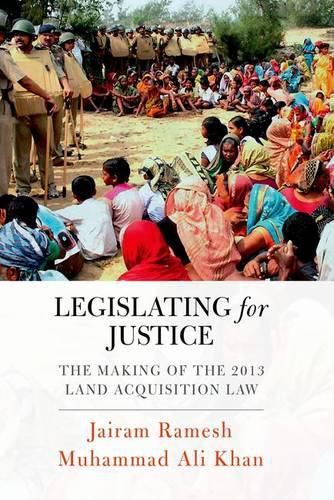Readings Newsletter
Become a Readings Member to make your shopping experience even easier.
Sign in or sign up for free!
You’re not far away from qualifying for FREE standard shipping within Australia
You’ve qualified for FREE standard shipping within Australia
The cart is loading…






Land ownership in India has always been a risky proposition. The hitherto unfettered power of acquisition and the refusal of the Parliament to recognize the right to own property as a fundamental one, had emboldened the state to stake claim on any land it saw fit. However, in the years 2012-2014, the Government of India embarked on an exercise to not just amend but to rewrite the law on acquisition. This process saw the radical polarization of public opinion into two sharp sides -those who saw acquisition as a necessary tool to India’s development (given the absence of other mechanisms guaranteeing clear title), and those who were sharply opposed to an archaic relic that defied the rule of law.
This book attempts to explain the rationale employed behind each and every provision by the then Minister and his Principle Aide who helped draft the law. The book is a firsthand account of the challenges faced and the factors that drove the decisions in regulating the State’s approach to a resource that is arguably the most important in a land deficit people surplus nation.
$9.00 standard shipping within Australia
FREE standard shipping within Australia for orders over $100.00
Express & International shipping calculated at checkout
Land ownership in India has always been a risky proposition. The hitherto unfettered power of acquisition and the refusal of the Parliament to recognize the right to own property as a fundamental one, had emboldened the state to stake claim on any land it saw fit. However, in the years 2012-2014, the Government of India embarked on an exercise to not just amend but to rewrite the law on acquisition. This process saw the radical polarization of public opinion into two sharp sides -those who saw acquisition as a necessary tool to India’s development (given the absence of other mechanisms guaranteeing clear title), and those who were sharply opposed to an archaic relic that defied the rule of law.
This book attempts to explain the rationale employed behind each and every provision by the then Minister and his Principle Aide who helped draft the law. The book is a firsthand account of the challenges faced and the factors that drove the decisions in regulating the State’s approach to a resource that is arguably the most important in a land deficit people surplus nation.